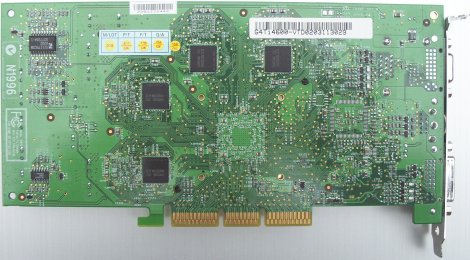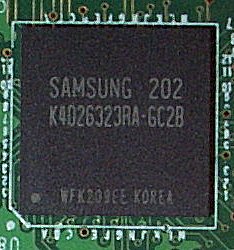The Card
We've briefly discussed the merits of the Geforce4 Ti 4600. if you would like a fuller, more technical discussion, then simply have a look at our Ti 4600 reference review. It should give you some insight into what makes the MSI Ti 4600 tick.


The MSI G4Ti4600-VTD is largely based on NVIDIA's reference design, no bad thing in our eyes as the reference design is a proven solution. The MSI Ti 4600 bears an uncanny resemblance to the Creative Ti 4600 we reviewed recently. This is to be expected as both video cards are manufactured by MSI themselves.
Sticking close to the reference design usually means that little additional thought has to be put into the layout of the card, therefore cutting costs and saving time for the manufacturer concerned. One of MSI's policies has always been in delivering value to the customer, this design allows them to do so. It also allows the MSI G4Ti4600-VTD to arrive at mass-market quickly. Like all Geforce4 Ti 4600s, the MSI has a bank of capacitors sitting on the right of the board. I personally like the look of the MSI card, it's about as uncluttered as a Geforce4 Ti 4600 will ever get.

The Creative Geforce4 Ti 4600 GPU fan caused quite a stir here at Hexus, due in part to its striking looks and, perhaps more importantly, by the sound it emitted during operation. It was without doubt the most high-pitched video card fan that we had ever heard. So it comes as no surprise that we were slightly reticent to install the MSI Ti 4600, it appears to share the same fan. The MSI fan, although a notch or two above what we would have ideally liked, was quieter than the Creative GPU fan, strange as we have mentioned that MSI manufacture both sets of video cards. You can see the transparent cover sitting on top of the fins, we feel it gives the MSI a classy look.
Incidentally, removing the transparent cover by unscrewing the four small screws that hold it in place results in markedly quieter operation. We feel that the reduction in noise is due to the airflow not being restricted by the enclosed space when the transparent cover is in place.
As you can perhaps see, the set of fins help to channel the heat away from the GPU to the surrounding areas. The novel approach, first seen on the reference card, ensures that the GPU doesn't become too warm. After all, we're dealing with a 300MHz core still manufactured on a 0.15u process.

The left-hand-side of the MSI is dominated by the elongated HD15 port, VIVO, and DVI connector. We've yet to satisfactorily work out why the connector is now elongated. The Silicon Image chip at bottom of the above picture serves as an external, second TMDS. It allows the DVI connector to display images up to 1920x1440 in resolution, giving true dual display support.
The video in / video out (VIVO) chip is located just above the TMDS, powered by the capable Philips SAA7108E. We've previously seen this on the more feature-rich Geforce3 cards, so it's most welcome on the MSI G4Ti4600-VTD. The only notable detraction is its inability to display and process streams with resolutions greater than 800x600.

The back of the MSI is standard fare. We see the HD15 connector on the left, the VIVO connector in the middle, and the now common DVI connector on the right. Although not included with our particular review card, we have it on good authority that a DVI-to-VGA adapter is now shipping with the MSI Ti 4600, we welcome this as the consumer should not have to invest in further hardware when purchasing a flagship card.

The MSI Ti 4600 is equipped with 128MB of Samsung 2.8ns Tiny BGA memory in the form of a total of 8 x 16MB chips. The RAM is left bare. Firstly, this helps to reduce costs a little. Secondly, the RAM became barely warm to the touch when in full stress use, suggesting that RAMsinks are more of a marketing and aesthetic novelty than required cooling.
2.8ns memory is rated to effectively run at 714MHz. However, at such high frequencies, other factors such as trace length and overall PCB design can come into play. NVIDIA, perhaps wisely, restricted the rated frequency to a modest 650 MHz.
What we have yet to show you is the sheer size of the MSI G4Ti4600-VTD. Here it is sitting above a Gainward Geforce3, a card that is quite substantial in its own right.

Extremely imposing right form the outset.









